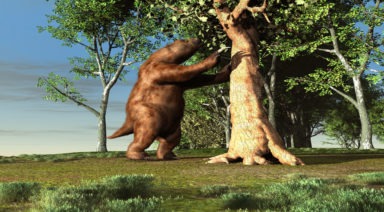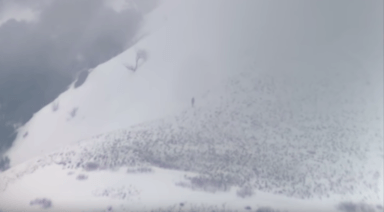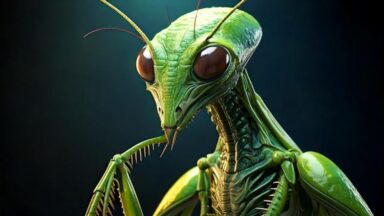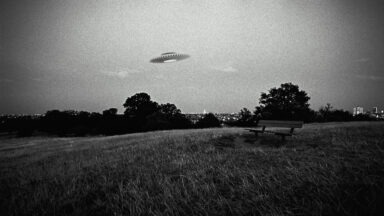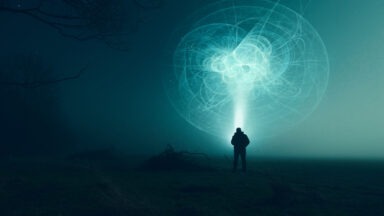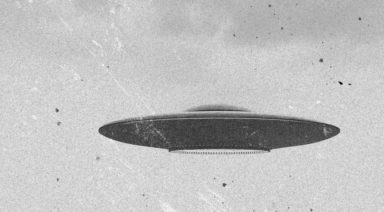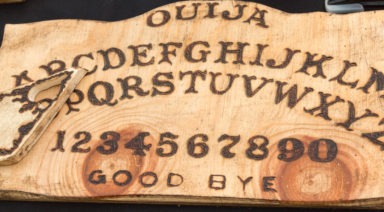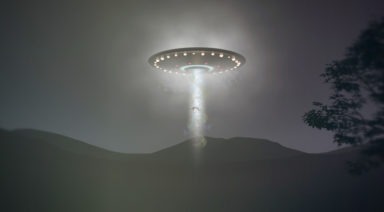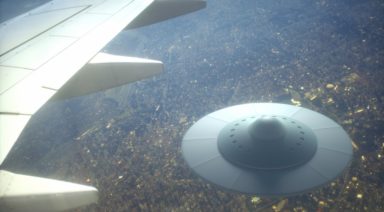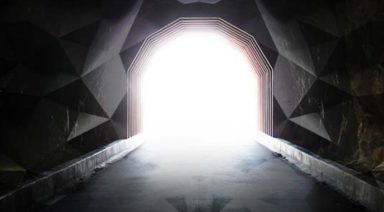Strange Creature Washes Ashore in Georgia, Baffles Scientists
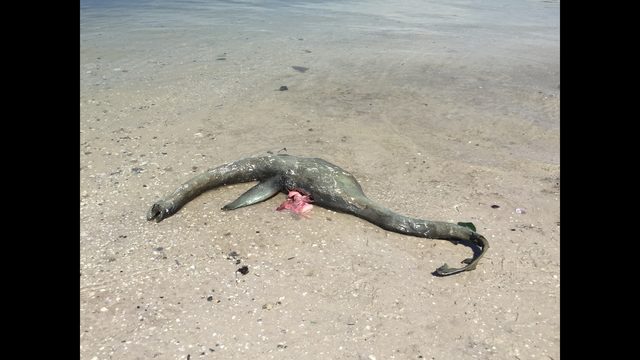
A bizarre animal washed up on shore in southeastern Georgia on Friday, that some say resembles the Loch Ness monster or a prehistoric marine reptile, like the Plesiosaur. The green, seafaring creature appears to have a small head, long neck, two fins, and a frilled tail.
The Jacksonville, Florida Fox affiliate reports that the animal was spotted by local resident, Jeff Warren, while he was fishing with his son on the coast of Wolf Island National Wildlife Refuge. Warren said he first thought the creature was a dead seal, but later described it as more of a “Loch Ness-type thing.”

Cryptozoologists are intrigued by the recent find, due to the legend of the Altamaha-ha, a Loch Ness-type cryptid, fabled to inhabit the waters around southeastern Georgia. Sightings of the creature are common in the many tributaries and streams flowing in from the mouth of the Altamaha River.
Some have speculated that the creature could be a rarely seen frilled shark, similar to the one spotted off the coast of Portugal last year. Frilled sharks do live in the waters around Georgia, though the specimen in question doesn’t appear to have the animal’s typical razor teeth.
Experts have ruled out the possibility that the creature is a cetacean, the group of marine mammals that includes whales, dolphins and porpoises. Often in these scenarios, the animal in question turns out to be a cetacean, such as the case last year, when a massive, grey animal washed ashore on an Indonesian island, mystifying locals, until it was determined to be a decomposing whale.
Unfortunately, Warren was unable to capture the specimen and only posted a single, slightly blurry video of the creature, leading some to call it a hoax. There are, however, a multitude of new species discovered each year, with one estimate predicting that 24 to 31 percent of marine species have yet to be discovered.
Bigfoot Encounters and Other Evidence of the Elusive Cryptid

Whether you consider yourself a believer or not, there are hundreds, if not thousands, of reported Bigfoot encounters, including a few from some widely recognized names. These encounters span cultures and continents and even date back to times of antiquity when natives ruled the land. Today, more than 20 percent of the U.S. population says it believes Bigfoot exists, and there’s plenty of evidence to boot.
Last year, two sightings picked up by trail cameras on Sherman Pass and SR 20 in Snoqualmie, WA caught what appears to be a large bipedal figure trekking through the snow, reigniting passionate debate about the famous cryptid.




